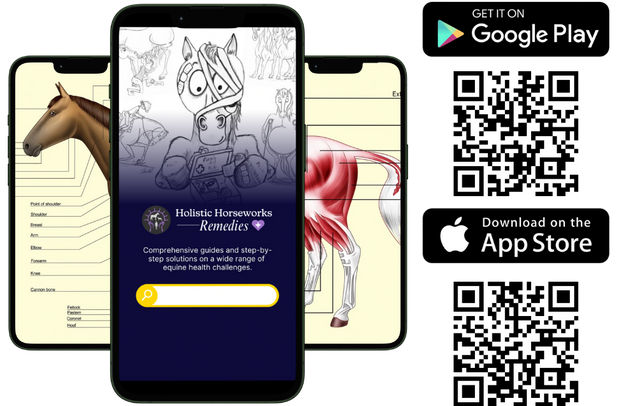Foals Need Bodywork, Too!
Share this episode:
Early bodywork can profoundly impact your foal’s development, ensuring they grow into healthy, balanced, and well-adjusted adults. Let’s talk about essential timing and techniques of early bodywork, helping you recognize signs of misalignment and understand the benefits of starting bodywork from a young age.
Episode Transcription
Expand to read more...
Lisa:
Welcome to Holistic Horseworks talks. Join us with founder April love as we talk about equine care. Learn what you can do to keep your horse happy, healthy, rideable and sound through their 30s. Have a question you’d like to submit to the podcast, just email April at holistic horseworks.com For a chance to get it featured on the next episode. So can you tell me a little bit about like, When should we start looking for these issues in our horses? And how early Have you noticed that that they do tend to start?
April Love:
So not a lot of people ask you to look at foals but when I’ve been working on brood mares or seen foals or someone has said that they have a problem horse, and they call me out. I was in this stall, it was a huge brood mare stall, and the six week old filly would turn around and double barrel, the mom. And it was actually dangerous to be in this big stall with the mom and the baby. And we got a long soft rope and we let the horse run into it. So kinda like it, you know, the foal kind of hit the rope right about here. And then we kind of wrapped it up in a figure eight, like you can do with the baby horses. And that foal already had everything out. So someone had haltered it, the occiput and atlas were out of alignment, the poll was out of alignment, her withers were out, her hips were hips are out, you know, and a lot of times people will see, oh, the foal went to sleep next to the corral panel fence and they woke up on the other side, huh my foal’s free, they don’t think about what probably happened to that foals body, when it woke up underneath the fence, were the legs in it, they’re not looking for scuffs of hair, the horse is running around, whinnying for its mom and stuff since it’s on the other side. And they just reunite them, but a whole bunch of shifts happen in that little baby, it’s kind of like your child crawling out through the, you know, crib bars and kind of hanging there and then falling on the floor, you know, something’s going to be out of whack. So 45 minutes later of having to go in and go out and work on this little baby horse they that was so dangerous the day before. They said oh, it just led the next day by the halter right next to the mare just really peaceful and she wasn’t I mean, she was banging on that her mom and turn it around and kick her and the whole disposition changed. And the foal video that I made in Idaho that’s on my website for sale was a three month old baby horse. And we were only going from the barn to the arena and the owners like you know, take the whip they had the halter and lead rope on it and they were leaving it next to the mom. And on a three month baby horse they’re like take the whip, you know. He was a little chestnut Colt and he was already spinning and kicking at people and just walking around the arena getting used to that situation before we started the filming, he double barreled my other instructor Leila, just out of nowhere, just kicking out so they were labeled as problem horses and it was great opportunity to have him in my video and watch him from the beginning to the end because by the end he was leading really quietly next to his dam. And then we videoed a little bit about the hooves so he had first rib out I believe on the left side and he was already starting the high low of syndrome. And there was a little wooden pallet out there to teach horses to stand up on a pallet and I walked him up on that and owner was impressed because he’s never been on that before and he just stood there so quietly while we took pictures of his hooves the crushed inside heal from the first rib. What that was doing at just three months of age. So you know the farriers and trimmers can try and cut the hoof but you’ll notice on the baby horses the crushed inside heel, and already like a high low starting so the first rib which comes out, it’s out of alignment, it’s right under the point of this shoulder is going to determine which leg goes forward when they try to eat off the ground. The babies have this huge long legs and a short little neck so they’ll always have like one leg way far forward and one back, but the first rib at the base of the shoulder is gonna determine which leg is always going forward and if you always have one forward and one back, the back hoof is going to grow a long heel and the forward one is going to have the crushed heel. So in addressing this in foals, they go right into training. They’re so easy to train, I raised black and white Pinto stallion from a baby, I could sit on him when he was eating just like two years old for a minute lay over him, pony him on the trails, there was no bucking there was no refusing lunging everything in his body was just correct. So I see so many people send their horse to training, I was a nice three year old horse and it came back a mess. They didn’t balance the teeth, they didn’t balance the body before they asked for repetition training with a saddle and being lunged or patients poles that the trainers put them on, the trainers, they’ll just say, oh, they’ll figure it out as they’re fighting and struggling on the rope. You know, they teach them to be tied there all day long. And it just does so much damage to the head when they fight you know, the halter and lead rope and their bones are so soft. So I really recommend getting my foal video and getting to work on your baby horses. It’s a whole different pattern than the adult horses because you do it more like itchy, scratchy, itchy, scratchy, put the hip in, itchy scratchy lift some ribs, itchy scratchy, do you know the poll and itchy scratchy and lift the leg and you know, sometimes the foals run off but they kind of feel it in their body. And then within 60 seconds to two minutes, they’re back for more because a lot of the younger foals, I’ll work on them at liberty without a halter just in the stall with the dam and you do a little bit they go in and they go Ah yeah, that feels better. Can I have some more and they’re like right back and everybody says totally different horse the next day. So if we started from there, we should be able to ride them all the way through their 30s Because we’re keeping the whole body in balance. It’s not a car that okay, I put gas in it and now I want to ride it.
Lisa:
Mm hmm. So how early would you recommend starting and I guess okay, this is a two fold question. How early would you recommend starting and do you find it is easier or more challenging to work with foals?
April Love:
So, it depends on the handling of the brood mare. A lot of people just have brood mares giving birth out in pasture so then it’s hard to round them up. I had my own stallion and brood mares and babies and you can get hurt more from babies sometimes than adult horses just coming right up under your chin and conking you or rearing up and step you know slamming down on your foot or whatever. So having a small quiet area to work on them like right after they nourished is really good, you know, so you bring him into a stall or corral and let him settle in that environment and just do little steps. I offer all my clients a wellness mare and foal visit because the mare actually has to displace her hips to push the foal out. So it’s nice for the broodmare to have a little bit of a tune up after giving birth. I mean just thinking about you and your hips and you know, and if the baby is the foal is born in a stall, they can be smushed against the wall depending on how the mare’s laying, so you can see some horses that are only a day or two old that can use a little bit of tweaks. And all of my moves are so gentle, it’s just a little scratch and lift and scratch and lift and all the babies that I raise that I raised doing this program. The people that bought them are like oh my god this horse walked up the stairs on my deck and was walking around my deck and looked in the mirror looking at us they were so personable they were so you know hi you know do something like from my butt. You know my foals would walk in the garage or on the lawnmower and stuff looking for people to interact with, I’d leave my horse trailer door open it was a three horse stock load and I put some hay or treats in there and the foals would jump in there all by themselves and eat some treats and come back out and how much easier is it if they are okay with all of this by six months of age instead of at age three trying to teach him to get in a horse trailer. You know so or being handled or being touched I get your so many horses that you get near the hind end and they’re so sore that they’re kicking or firing the SI joint is sore they don’t want you touching their hind legs and you know if all of this is done as foals they’re just the whole rest of their life is easier and the training is just showing them something once and they get it and they’re willing instead of repetition and repetition and me and my horse have to stay here all day and until he gets this now he knows what you want. His body just can’t do it without it causing him pain. So the younger that we check in the more amazing bond you’re going to have with your foal the higher price you’re going to be able to sell your yearlings at because you know I would go out there and imprint my babies put that figure eight rope around them. Itchy scratchy them out lower pick up their feet when the vet came to do the mare wellness exam and check the sack and embryo that everything came out and he’s just standing there and I had clipped a little bridle path. You know, they were going to be show horses and running the noisy little cordless clippers all over them when they’re a baby, they were just so much easier than you know a year old and holding down an ear and saying I am going to do this and I don’t care if you’re afraid of buzzing because it sounds like bees near your ear. You know, we’re gonna get it done. All of my horses were just so easy to work with so easy to medicate doctor vet calls getting in trailers in emergencies, everything because you’re just hands on working with them. And it can just be five minutes. Just you’re making something better in their body, they’re always going to come to look at your hands and say help me.
Lisa:
So if I’m hearing you, right, you’re saying that basically when it comes to body work, energy work, behavioral training, not even necessarily behavioral training, but it’s almost just like environmental training, getting them used to those environmental stimulants to just start it as early as possible.
April Love:
And have it in their home environment. I had a 10 month old Pinto baby mare that was walking over and crawling on a big pile of tarps. Everybody’s like, wow, that’s really cool. She’s got it in her teeth. And she’s dragging it around, I said, Yeah, she doesn’t really spook at anything because, you know, they had everything in their environment. And they had all that hands on.
Lisa:
So when you’re starting to work with foals, let’s say somebody didn’t start them from a young age and they’re coming to you for your program, you they may have started experiencing experiencing some issues. What do you look at the first time you see a foal and how much is it similar and how much is different from when you’re looking at like a full adult horse?
April Love:
So the what is out in the horse will be the same but the compensations will be different. So we tack up and ride the weakest area of the horse, you know, that’s their suspension bridge, their ribs and their spine. So if something can’t move correct in the left or the right shoulder and we’re lunging them, or riding them or jumping them or something, and we ask for a specific move, they can’t do, they’re going to borrow it from somewhere else. So you’re gonna have over tightness, sore tendons, dispensary’s, overdevelopment, and the neck muscles and your rhomboids and trapezius, okay, because then the shoulder can’t move correctly. So they’re overusing these muscles to pick up the shoulder and bring it through on an adult horse being ridden. And in those patterns, once we do this bodywork, I have to tell the people don’t ride or work the horse for three days keep doing my yoga because all the muscles, tendons, ligaments have pulled a certain way for so long. It wants to pull the body back out that way. So just turn the horse out. Let them walk, let them realize they can totally stretch that elbow out and knee now that we’ve adjusted them and the whole body’s moving freely, and they can change, where the foal, it’s like okay, it’s been like this for a while, but we didn’t force the compensation. So they only have those little issues without the whole issue. What we’re seeing on the foals nowadays, though, with the mineral deficient hays and grains, is both first rib misalignments. So we’re seeing more kissing spine. So when both first ribs are misaligned, and in the shoulder, neither shoulder can move correctly. And I’ll tell the client so it’s going to have this lumbering kind of Frankenstein kind of movement canter and they’re like, yep, you described it well, if neither shoulder can move correctly, the horse has to throw so far back to the hind end overstressing, the stocks to pick up the front end, where the foal is just going to have a short neck, it’s only gonna have been in that area because we didn’t tack up and ride and lunge and, and do force repetitive training on a body that couldn’t move correctly. So it’s so much faster and so much more efficient. We can get to them before they start lunging and start training because by the time they’re a year old, you already have the high low hoof syndrome. Or you know, some people might be calling it a club foot when it’s only a high heel club foot’s totally different. But it can take six months to balance out those hooves. You know, with the bodywork program, you know continued you know, if you don’t have four hooves, the same height and shape and it’s like you running on a high heeled shoe and a slipper on the other foot. Everything else is going to be out balance where if it’s a foal and you do the body work the trimmer sees all the changes within four to six weeks because they’re now loading everything correctly without the compensations and in the older horses you know you’re strained or sore or torn suspensories and tendons, you know, is just a ligament down in here and all the stall rest but nobody’s looking at why was the leg overworking you know what else in the body was creating this effect where just like dogs so foals and dogs when not being worked will just say oh, I just can’t run like that so I’m not going to you know so it’s so much nicer like I said to get to them earlier get the hooves balanced earlier it gives them a mind and and personality that is willing to work with you people say they would ride my horses and say, it’s so willing you click to trot kiss to canter and you do a half halt and the drop down and they go through anything and they don’t spook anything, at water and dogs and bikes and I said yeah cuz their head and their body and their emotions and their spirit is all in balance. And when I was doing 2000 miles of endurance on my white Arab gelding Tiki. He was just a joy to ride and we’re talking 70 mile an hour winds with rump road coming up, wrapping around my head and plastic bags rolling down the desert and just a nice little horse that just trotted and cantered wherever I asked him to…
Lisa:
I had an issue with a plastic bag and a horse once that ended with me on the ground.
April Love:
Yeah. And that can be a big hospital bill. I had someone say that they had their horse had spooked they’d fallen off broken their collarbone, and they wish they had bought one of my horses because if you fall off one of mine, they snuffle you while you’re on the ground going, what are you doing down there? You’re supposed to be on my back. Why did you fall off? You know, like if they tripped or something they that horse is just present with you when you do this body work. You know, even if you’re just doing the daily yoga and you don’t do my whole home study program. Just having hands on and relieving some tight painful areas in the horse. Just that bond between you and the horse is just amazing.
Lisa:
Thank you for tuning in to another episode of Holistic Horseworks Talks with April Love. Remember to check the show notes for links to all the resources mentioned in this episode. Have a question you’d like to submit to the podcast? Email april@horseworks.com for a chance to get it featured on the next episode. Loved this information, share it with your horse friends, they’ll find it helpful too to learn more, visit holistichorseworks.com And before you go, make sure you have a copy of our free ebook, horse 101 everything you wish you had known before you got your first horse at horseacademy101.com
How Early Should You Start Doing Bodywork on Foals?
One of the most common questions I receive is about the timing of bodywork for horses. How early should we begin? The answer is simple: as early as possible. From my experience, the sooner we start addressing the physical imbalances in foals, the better their overall development and future performance will be.
During my work, I’ve seen foals as young as six weeks old showing signs of misalignment. For instance, I once encountered a six-week-old filly who was dangerously aggressive due to discomfort and misalignment in her body. After a session of gentle bodywork, this filly transformed into a calm and manageable young horse, highlighting how early intervention can prevent behavioral issues rooted in physical discomfort.
How do I know if my foal needs bodywork?
Foals can develop misalignments and compensations even from birth. These issues can stem from complications during the birthing process, early handling, or accidents like getting stuck under a fence. Common signs to watch for include:
Uneven gait or movement: A foal that always leads with the same leg when grazing might have a first rib misalignment.
Behavioral issues: Kicking, biting, or general unmanageability can often be traced back to physical discomfort.
Physical asymmetry: Noticeable differences in hoof shape or size can indicate underlying skeletal imbalances.
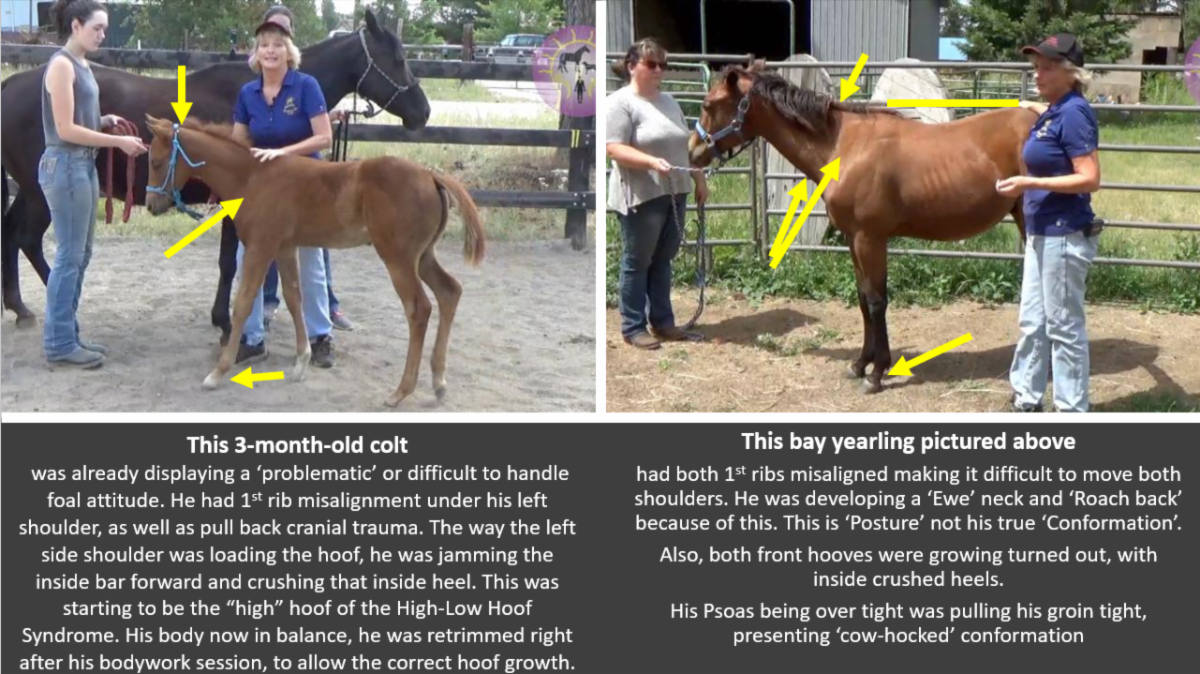
Techniques and Benefits of Foal Bodywork
Working with foals requires a gentle touch. The techniques I use differ from those for adult horses and involve more of an “itchy-scratchy” approach. This method allows the foal to experience relief without the stress of forceful adjustments. In many cases, foals will return for more, recognizing the relief it brings.
For example, in a recent case, a three-month-old colt that was labeled a problem horse, kicking anyone who would come close, and refusing to be led by the halter showed amazing improvement after just one session of bodywork. By the end of our session, he was leading quietly next to his dam and showing none of the previous aggressive behavior. This transformation was a testament to the power of early intervention.
Starting bodywork early not only addresses immediate physical issues but also sets the foundation for a lifetime of health and harmony. Here are some benefits:
Improved training and handling: Foals that undergo bodywork are easier to handle and train. They are more willing and less likely to develop negative associations with training tools and environments.
Prevention of long-term issues: Addressing misalignments early prevents compensatory patterns that can lead to chronic issues later in life, such as kissing spine or tendon injuries.
Enhanced bond: Regular gentle handling through bodywork strengthens the bond between you and your foal, fostering trust and cooperation.
Learn How to Do Bodywork on Foals
Ready to start helping your foal or yearling with bodywork? Holistic Horseworks detailed video, “Bodywork for Foals and Yearlings,” provides step-by-step instructions, real-life examples, and practical tips to help you master these techniques. You’ll learn how to identify common misalignments, perform gentle adjustments, and ensure your young horse grows up healthy and balanced. Start your foal on the right path today, you have the power to transform their future!
Watch Instantly: Bodywork for Foals and yearlings *
We are very excited to bring you a unique video on how to work on foals and yearlings. This is information that is being missed in the equine industry, as most horse owners do not start bodywork until a horse is in training, or showing signs of body or lameness issues.
* Prerequisite: Level 1: Equine Musculoskeletal Unwinding clinic or home study course.
6 Must-Know Hore Care Tips for Winter
In this comprehensive guide, we'll share five essential cold weather horse care tips straight from the experts at Holistic Horseworks.Whether you're dealing with freezing temperatures, icy conditions or relentless mud, these strategies will help you keep your horse happy and healthy through even the harshest of winters.
Equine Vaccines: What’s In Them and How to Help Your Horse Naturally
Vaccines are often considered a cornerstone of equine health, but have you ever wondered exactly what’s in them, or how they might be affecting your horse’s long-term health?
Horses Are Talking, Are You Listening?
Holistic equine expert April Love wants you to know: your horse is speaking. And once you learn how to listen, everything changes. In her recent appearance at the Holistic Horse Conference, April sat down with Dr. Jeff Grognet and animal communicator Joan Ranquet to share her revolutionary approach to equine wellness.
How a Distance Reading CHANGED Kimberly and Her Horse
In this interview, holistic healing expert April Love uncovers the deep, often invisible threads connecting horse and human wellness. Join Kimberly, host of The Backyard Horse Enthusiast, as she shares her transformative experience with April's intuitive healing techniques.
Is It Really a Training Problem, or Is Your Horse in Pain?
If your horse bucks, resists the canter, or just feels off under saddle, the first thing many people assume is that it’s a training issue. Maybe the horse is being stubborn, or maybe it just needs more groundwork. But I want to let you in on something I’ve seen over and over again—those “training problems” are almost always your horse trying to say, “Ouch, that hurts!”
Did You Know That Saddle Fit Issues Are Really Horse Body Issues?
Saddle fit isn’t just about the saddle — it’s about the ever-changing body of the horse beneath it. While it’s tempting to invest in custom saddles or quick fixes like padded inserts, lasting comfort and performance come from addressing the root of the issue: your horse’s physical balance and symmetry.
Useful, Helpful Tips and Tricks for Horse Care | April Love’s Interview on The Backyard Horse Enthusiast
What would you do if your horse was limping, colicking, or spooking—and no one could tell you why? That question lit a fire in April Love that would grow into a global mission: helping horse owners uncover the root causes of mystery lameness, behavioral issues, and chronic pain that traditional methods often miss.
How to Find the Cause of Lameness in Horses
When a horse shows signs of lameness, pinpointing the exact cause can be challenging due to compensatory mechanisms. Horses often redistribute weight and movement to avoid pain, making the actual injury difficult to locate. Here’s a practical step-by-step guide to help you identify the root cause of lameness in horses.
Dogs Love Bodywork, Too! (Prevents ACL Tears and Hip Displaysia.)
If you’ve ever watched your dog run and noticed something a bit off—like both hind legs moving together or noticeably dragging their toes—it might be more than just an aging issue or a minor injury. Proactively managing canine skeletal health can prevent long-term joint issues such as hip dysplasia and ACL tears.

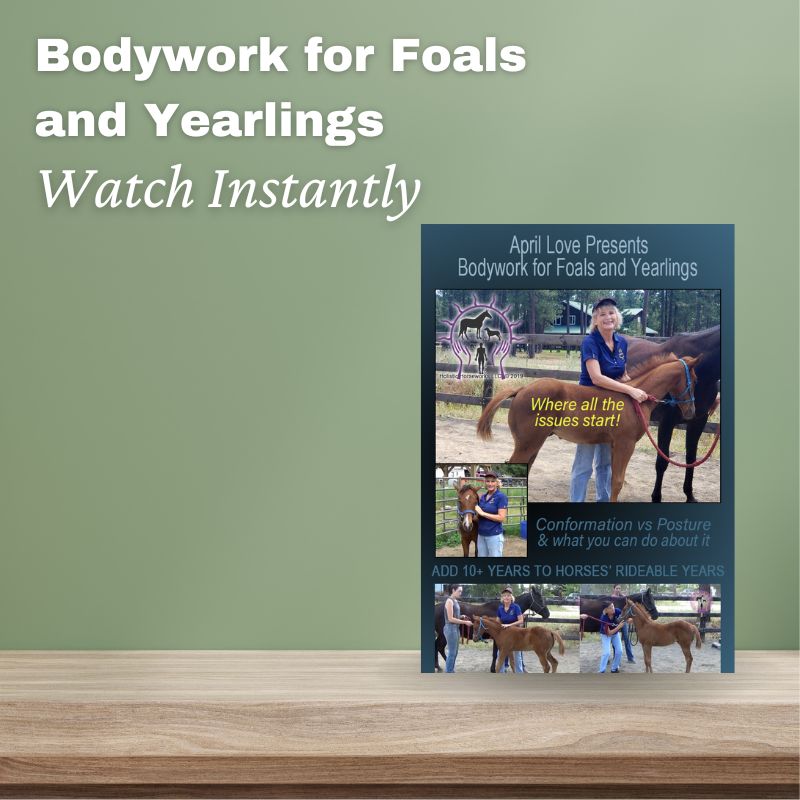
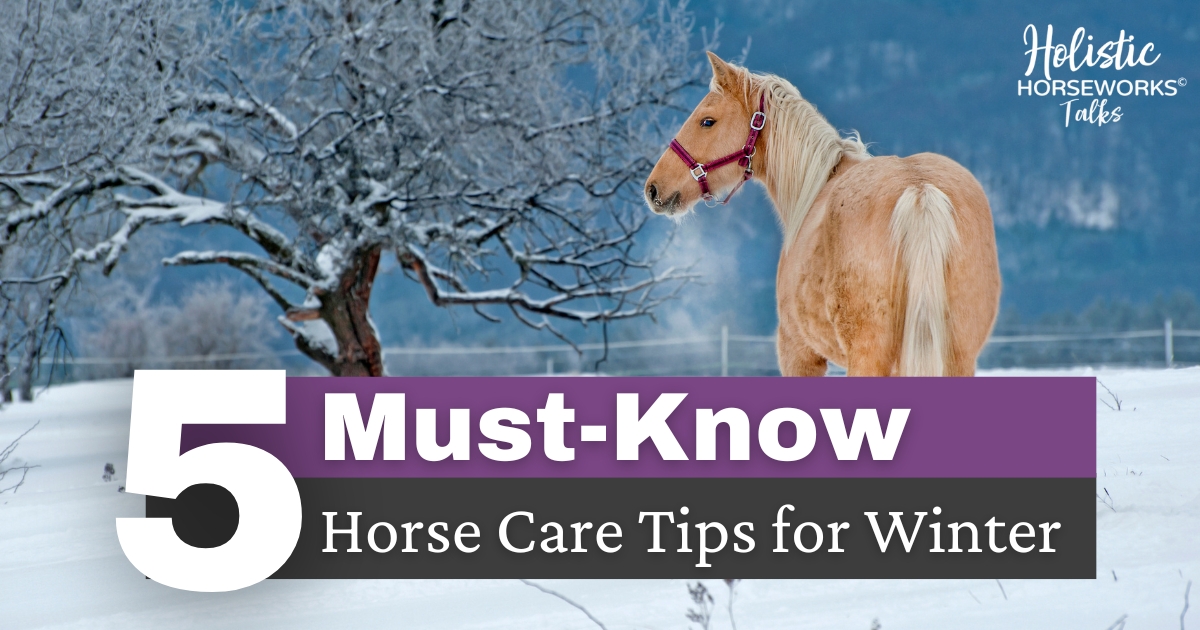
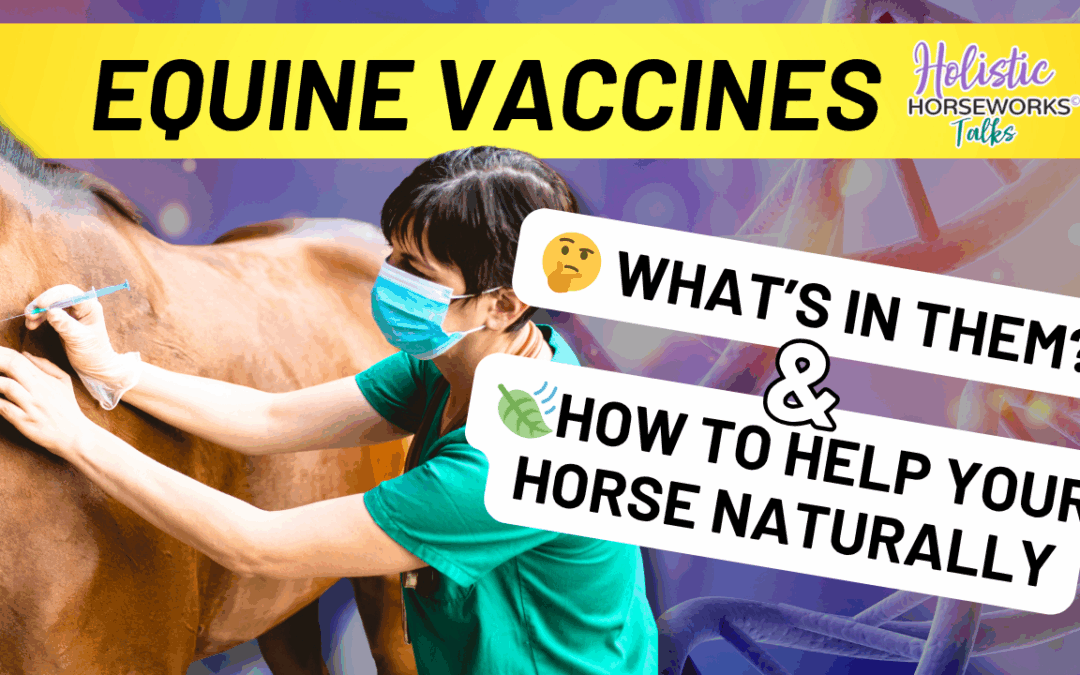
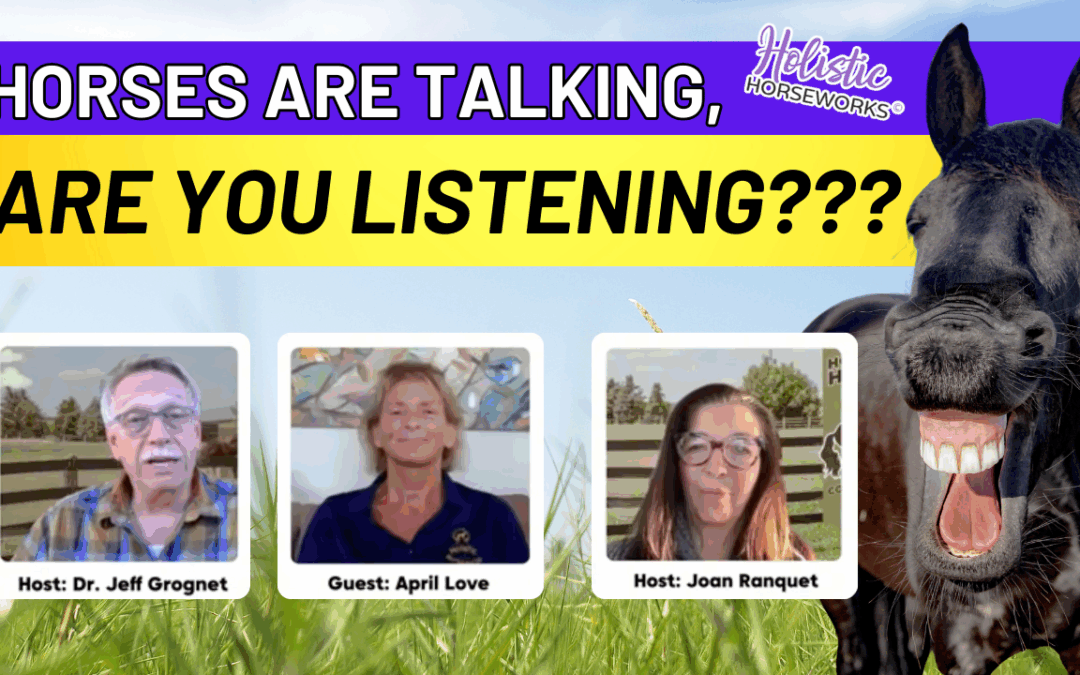
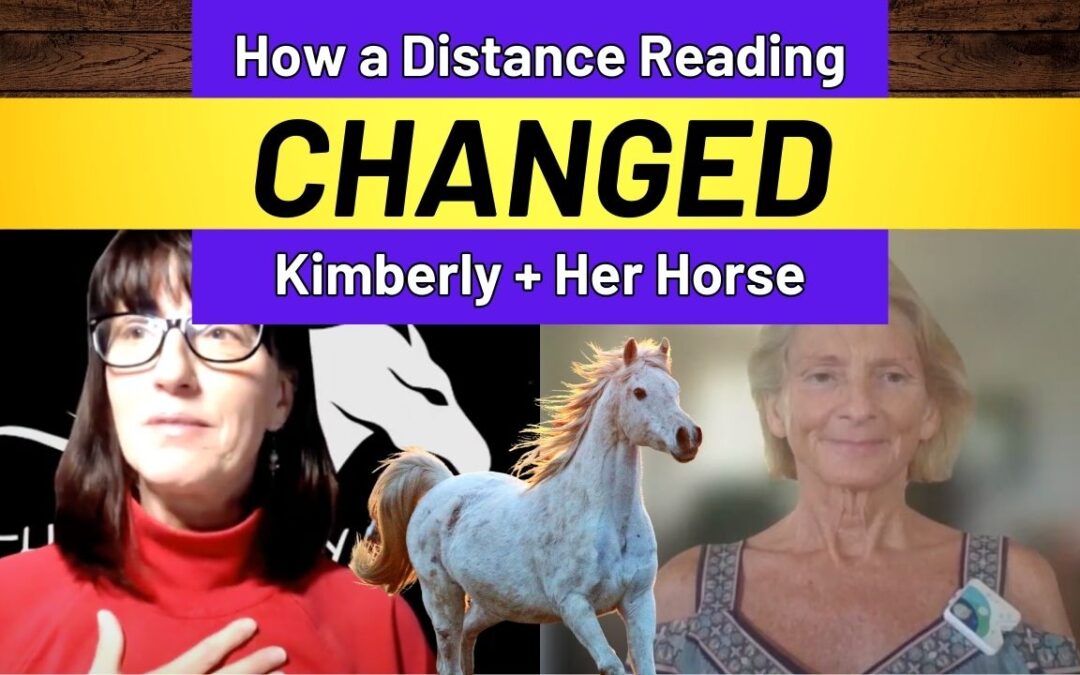
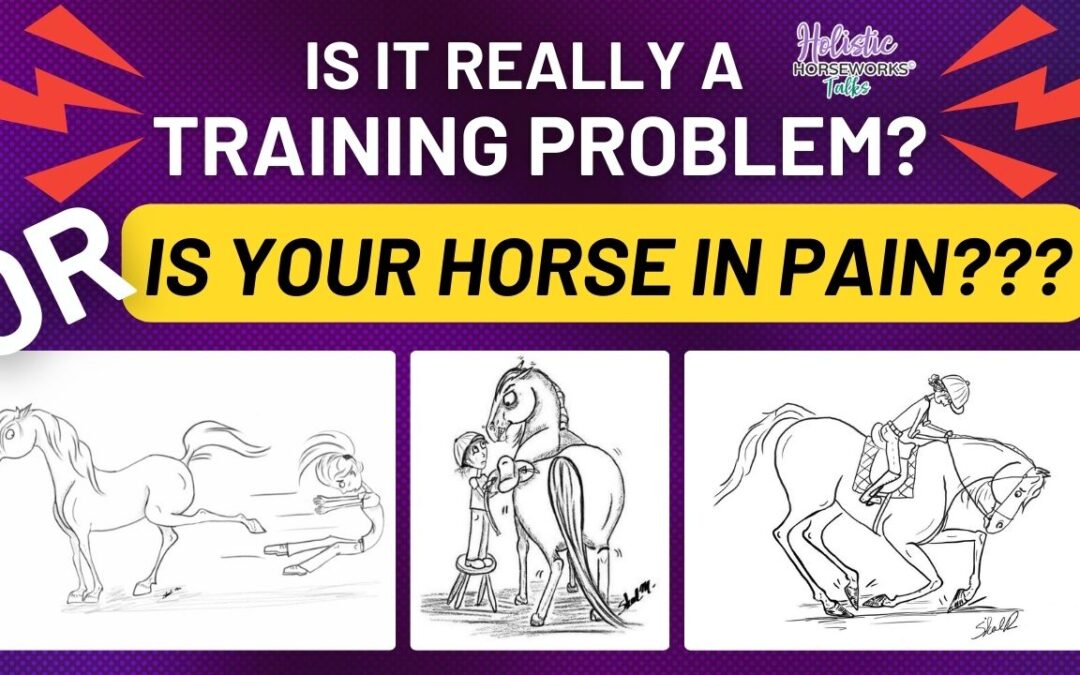
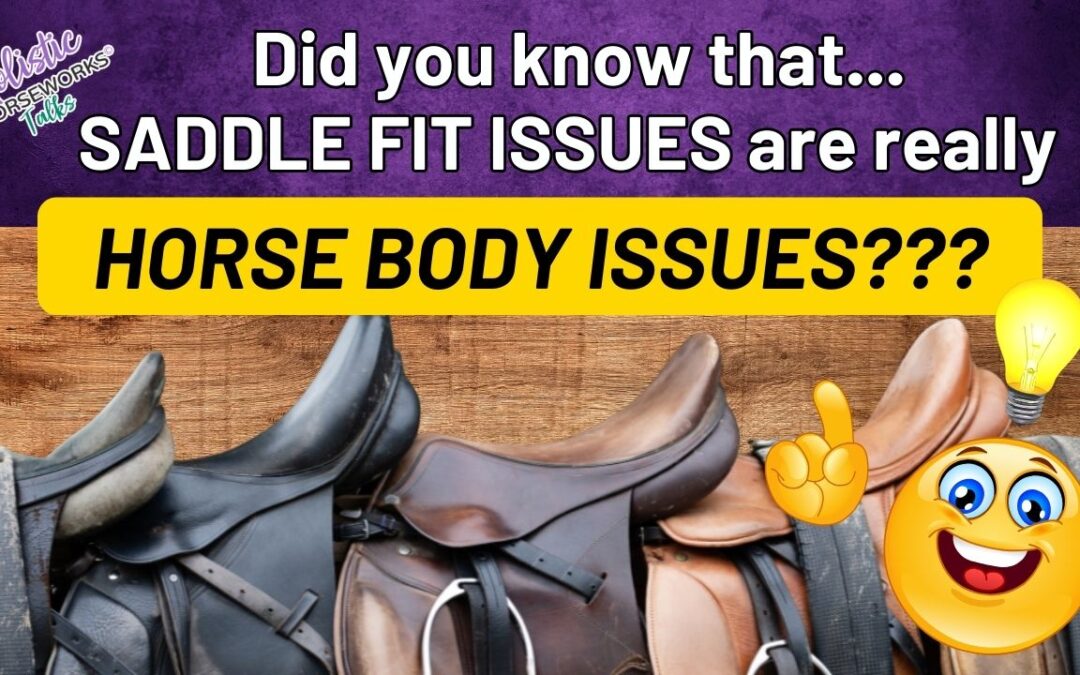
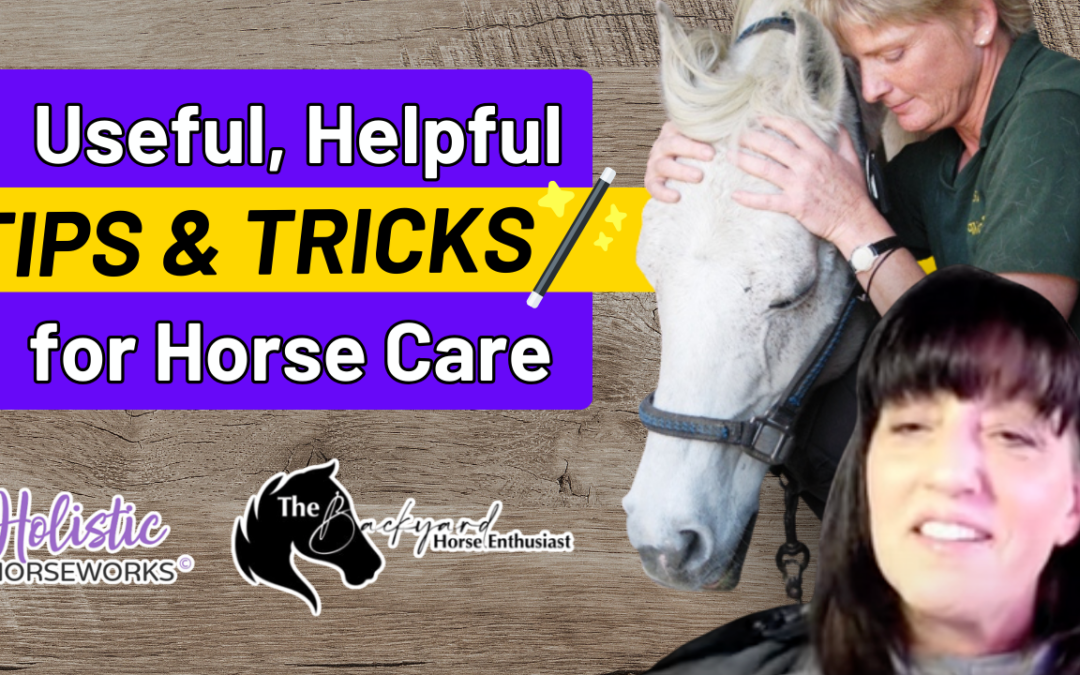
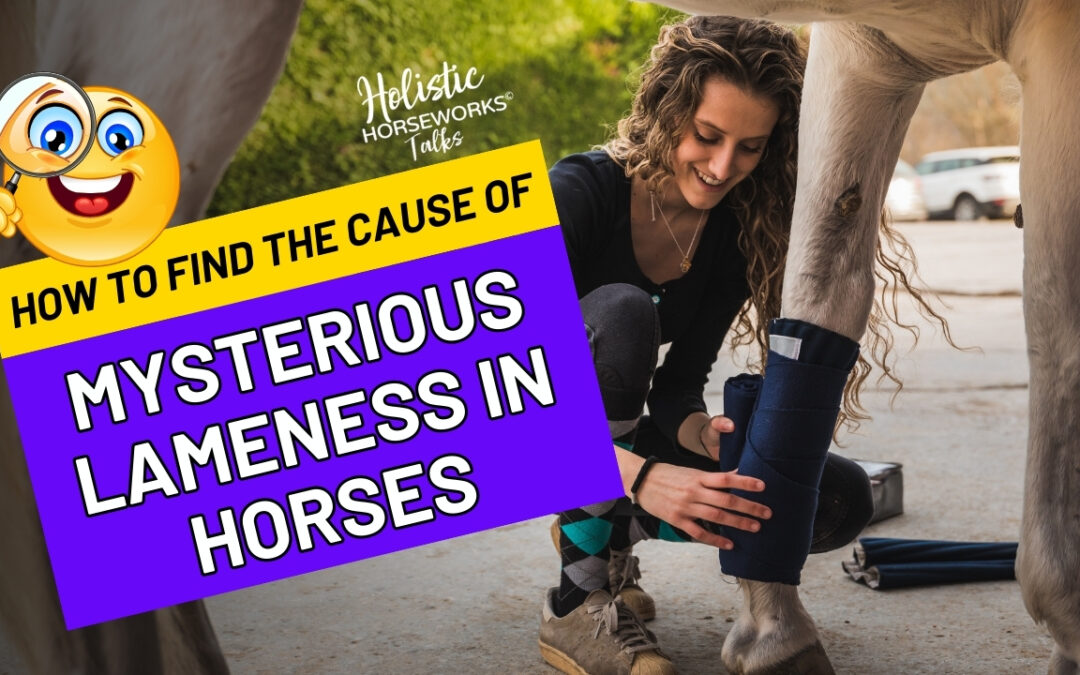
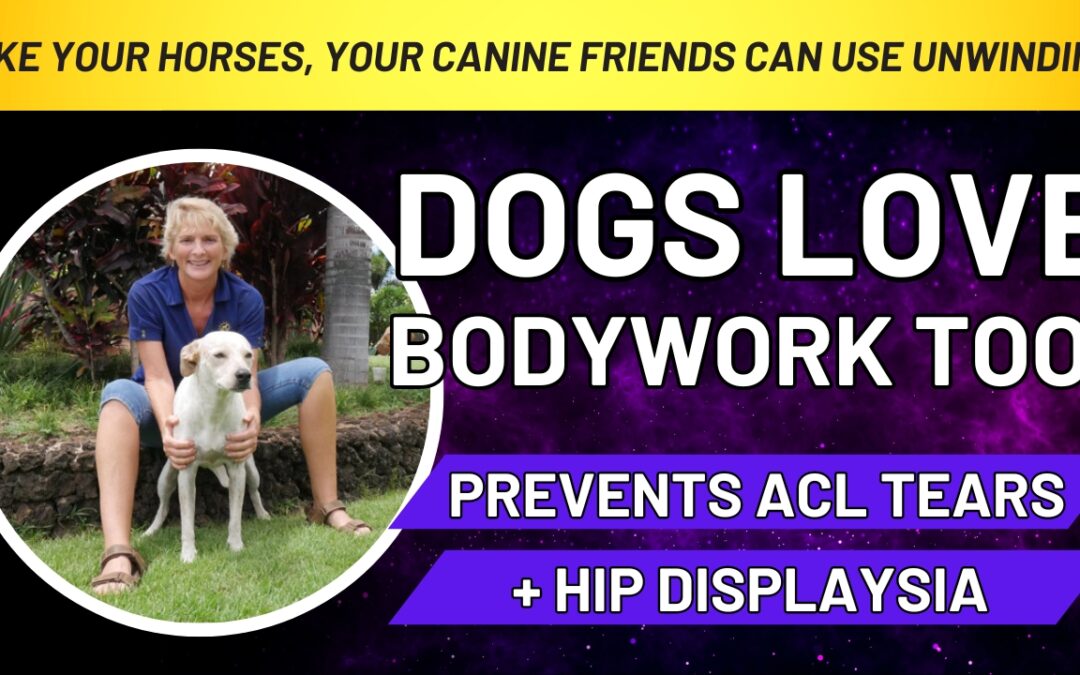
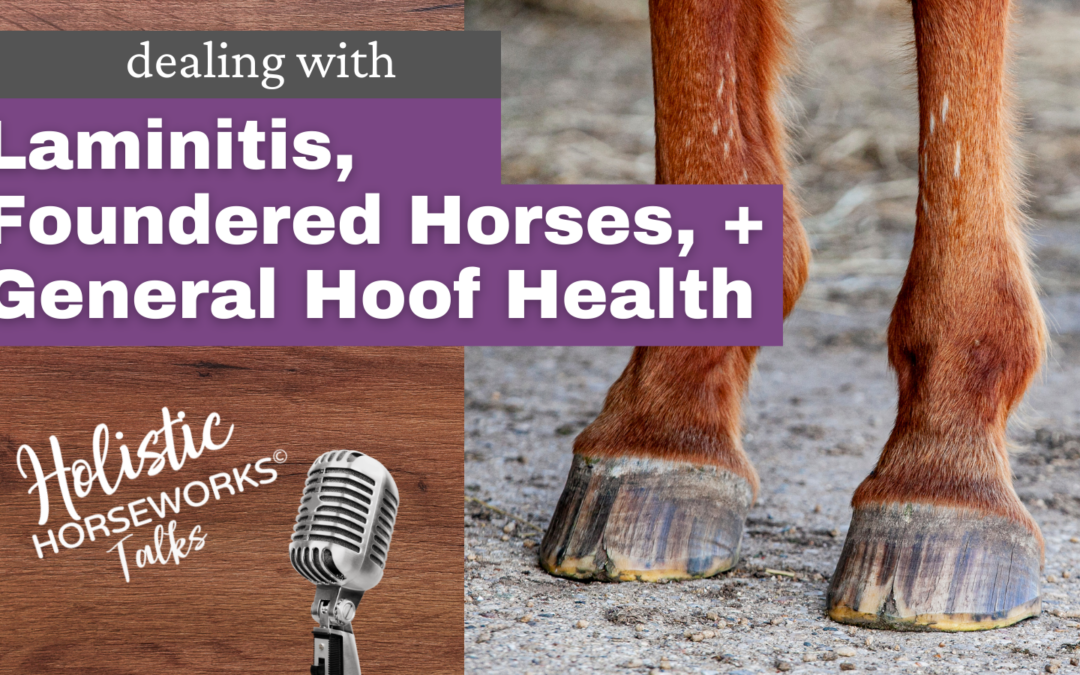
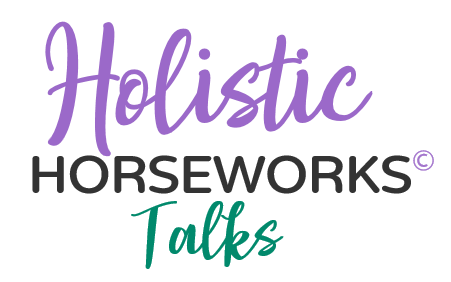
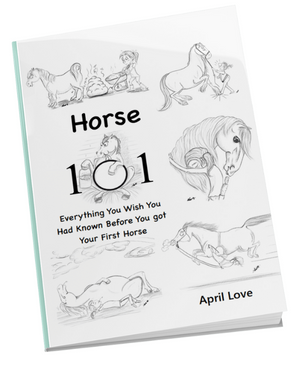
![Complete Level 1 & Level 2 Home Study + Private Training Package [NO DVD]](https://holistichorseworks.com/wp-content/uploads/2022/08/Level-1-and-Level-2-complete-home-study-and-training-package-400x400.jpg)
![Level 1 "Equine Musculoskeletal Unwinding" Home Study -Watch Instantly [NO DVD]](https://holistichorseworks.com/wp-content/uploads/2022/08/Level-1-Home-Study-400x400.jpg)
![Level 2 “CranioSacral Unwinding & Advanced Applied Kinesiology” Home Study - Watch Instantly [NO DVD]](https://holistichorseworks.com/wp-content/uploads/2022/08/Level-2-Home-Study-400x400.jpg)
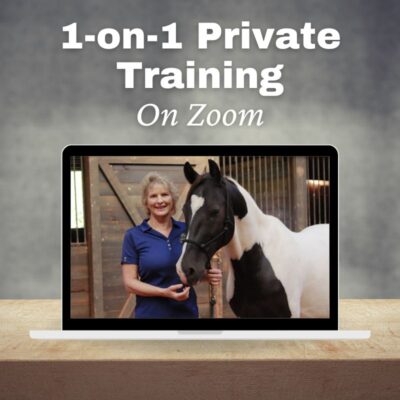

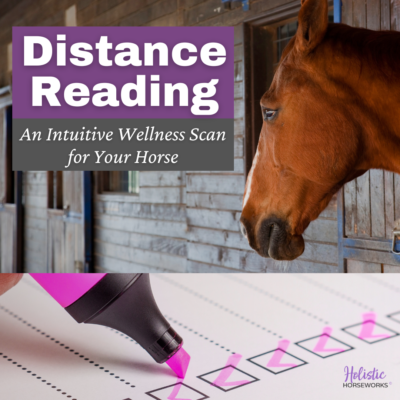

![Equine CranioSacral Energy Work -Watch Instantly [English and French]](https://holistichorseworks.com/wp-content/uploads/2022/09/equine-cranial-sacral-energy-work-watch-instantly-400x400.jpg)
